How to Find the Right Key for your Song
For singers, setting songs in the correct key is vitally important. The right key can make the song not only easier to sing, but much more exciting to hear for the audience.
Every so often, someone asks me “what key do I sing in”? There is no single key that anyone sings in. A “key signature” is basically an arrangement of sharps or flats. For example, in the key of D Major, you have two sharps (F# and C#), and harmony or chords can be created on each step of that major scale. The chords built on the first, fourth and fifth steps are major chords (think happy sounding) and the chords on the second, third, and sixth steps of the scale are minor chords (sad sounding). Composers use happy or sad sounding chords in various combinations to create a mood. A melody line is created from those chords, and that is what the singer is singing.
Songs are set in various keys by the composer to accommodate the range ability of the singer who will be recording the song. The song is transposed, or changed, from the originally composed key to fit the voice of the person recording the song. If the singer has a limited vocal range and cannot hit high notes, the song must be set in a key that allows the singer to hit the highest notes of the song (usually in the chorus, which is the most emotionally driven part of the song) without straining. If a song is well written, the chorus of that song will include higher and more sustained pitches than the verses.
It’s important for singers to know that written sheet music is often published in the key the song was originally recorded in, but that key might not be at all right for you to sing in! Even a half step key change (from the key of F to the key of F#, one half step higher, for example) can make a world of difference in a singer’s throat.
Now here is the really important part: the mistake most novice singers make is to set their keys too low. They are afraid they won’t hit the high notes so they sing their songs entirely in the chest voice, with the high notes of the chorus in pushed chest or “reach and strain” mode. Doing this night after night in a Broadway show or cover band gig is sure death, vocally. You WILL get hoarse, have vocal problems, and create a break a mile wide in your voice. So this is what we call a “short fix” with disastrous long-term consequences.
On the other hand, if you try to sing the song entirely in your upper register you sound like Julia Child, Aunt Bea, or an ageing church soprano, and that is not stylistically correct either. You want powerful high notes and a sound with some edge to it, right?
The solution is to set your songs in keys that are high enough so that the highest notes of the song are taken in a mix coordination in your upper register, rather than pushing chest voice up, or disconnecting into a weak and breathy sound. Often this might turn out to be as much as a minor third (three half steps) higher. This will feel weird at first, especially if you are a chest-pusher, because your mix voice will not be as developed as your chest register. So this method is the long-term fix, where you have an eye toward the future of your voice and career.
You must, must, MUST learn to sing with a good mix in the upper register, rather than pushed chest or disconnected head. (Please refer to some of my earlier blogs about how to select the right teacher to show you this- there aren’t many who really understand it!). Then, you have to habitually sing your songs in keys that require you to use your mix voice for the high notes rather than staying in the chest voice. This usually means transposing the song to a higher key. It will be harder for you at first, but the long- term benefits are well worth it.
One resource for singers is www.musicnotes.com. You can transpose the printed sheet music to any key you would like, and you can get a basic digital sounding piano accompaniment to play from your sheet music. In this way you can experiment with various keys for a very reasonable price for each transposition. A software program that allows you to transpose mp3 or wave karaoke tracks can be found at www.pitchswitch.com. This one allows you to save the file too. For mac users, Garage Band is an easy way to transpose accompaniment tracks.
As a final note: for auditions you might want to stick to the key you are most comfortable in right now. You want to show them your “strongest suit”, even if that means singing in only chest voice, for now. But you should always be working on developing a good mix, and eventually go out there and audition with a much greater range, using the mix voice, which is much more impressive!
For professional singing lessons in the Atlanta, Marietta and Alpharetta GA area, or to register for voice training online by skype, facetime, or speakerphone, please visit the website at www.singlikeastar.com, and click on the GET STARTED tab to register for a professional vocal evaluation and consultation.


